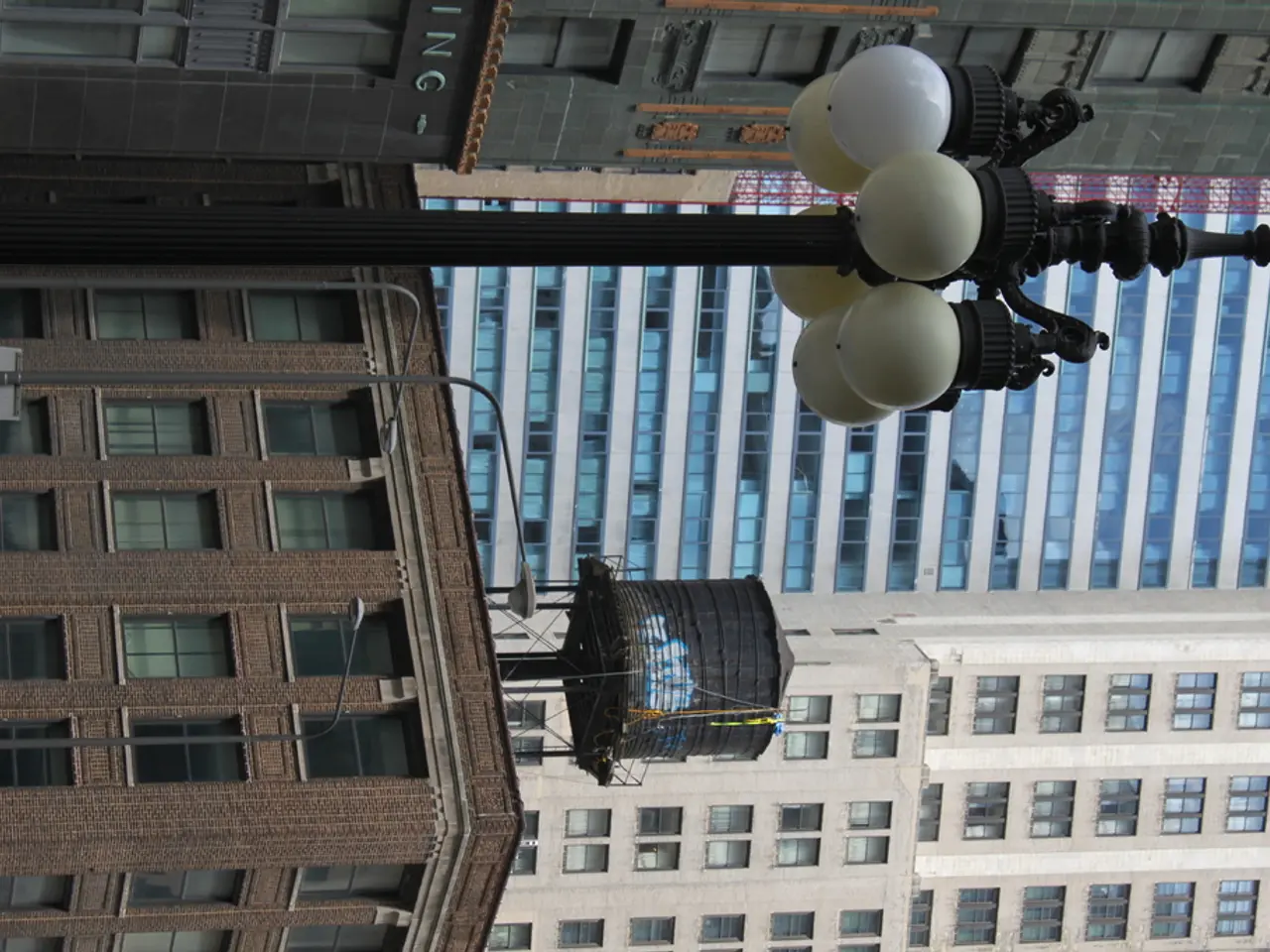Innovative Architecture in Berlin: cutting-edge designs for structures, water management, and urban transport infrastructure
Berlin, the city of innovation, is entering a new phase of applied research with three real-world labs: B(e)Ware, IWIQ, and U-Space Berlin. These projects, selected through a competition by the Berlin Senate with the goal of strengthening Berlin as a location for sustainable innovation, are set to significantly impact the city's future.
TU Berlin plays a key role as an innovation platform in all three real-world projects. The university is actively involved as consortium coordinator in B(e)Ware, partner in IWIQ, and U-Space Berlin.
B(e)Ware focuses on sustainable construction, using used wooden beams and steel supports as load-bearing structural elements. The goal is to establish an infrastructure for processing and distributing these materials and to overcome legal hurdles in waste and building code law. Testing routes for drone transport are being conducted in the Tempelhof-Schöneberg district, with citizen involvement in defining flight routes and assessing noise pollution.
The project IWIQ tests gray water recycling technology in existing buildings to generate heat and reuse water for various purposes. Detailed 3D building models are created for the implementation of a new water circulation system in the project IWIQ. The goal of IWIQ is to significantly reduce water and energy consumption in existing buildings in Berlin.
The "U-Space Berlin" project focuses on urban last-mile logistics using drones for critical goods transport such as medications and food. The project is testing not only technical but also organizational solutions for the safe integration of drones into everyday urban life. A type-open landing pad, similar to a parcel station, is being developed as part of the "U-Space Berlin" project.
The Senate Department for Economics, Energy and Operations, TU Berlin, and project partners recently announced the practical phase of these three real-world labs. The Berlin Senate is providing around nine million euros for these real-world labs, with around 3.1 million euros going directly to TU Berlin.
The real lab "Radbahn" under the U1 viaduct is one of the most well-known real labs in Berlin. Meanwhile, the TULIUM pavilion on the Charlottenburg TU campus, a water rescue station on the Müggelsee, and a workshop building of the youth building yard are examples of projects under B(e)Ware.
The projects aim to demonstrate how the future can be tested in the city, with the goal of showing the economic viability of these concepts and potential for developing new markets. TU Berlin aims to be a central interface for applied research in the capital through the StadtManufaktur platform, connecting scientists with partners from politics, business, and society.
The projects under these real-world labs are not just about technology and innovation. They aim to bring together interdisciplinary learning, science, business, and society, and test solutions in real-world environments. By doing so, Berlin is not just a city of the present, but a city shaping the future.








